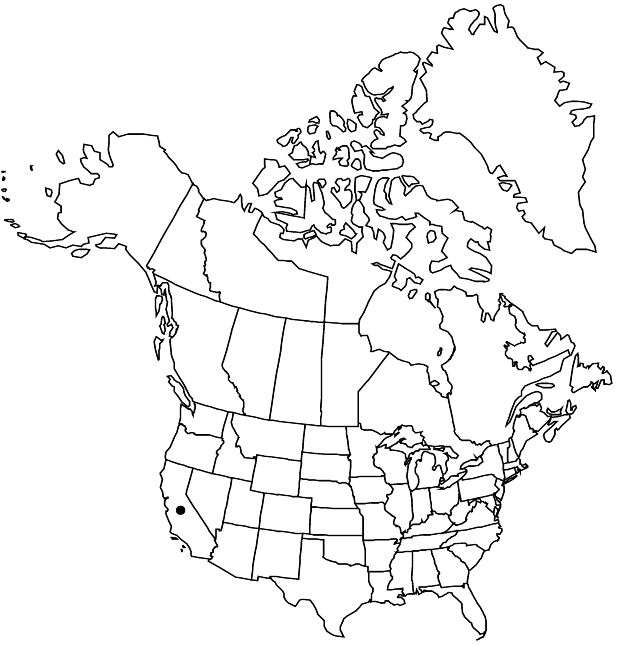Arctostaphylos cruzensis
Leafl. W. Bot 9: 218. 1962 ,.
Shrubs, prostrate or mat- or mound-forming, 0.1–1 m; burl absent; twigs sparsely short-hairy to sparsely hairy. Leaves: petiole to 2 mm; blade bright green, shiny, oblong-ovate, 1.5–3 × 1–2.5 cm, base auriculate-clasping, margins entire or toothed, plane, (hairy-ciliate proximally), surfaces smooth, finely tomentose, glabrescent. Inflorescences panicles, 1–3-branched; immature inflorescence pendent, (branches crowded, bell-shaped, concealed by bracts), axis 0.5–1.5 cm, 1+ mm diam., sparsely short-hairy and hairy; bracts appressed, leaflike, lanceolate to lanceolate-ovate, 5–15 mm, apex acute, surfaces hairy. Pedicels 4–5 mm, sparsely hairy. Flowers: corolla white, urceolate; ovary densely white-hairy. Fruits depressed-globose, 8–10 mm diam., glabrous. Stones distinct. 2n = 26.
Phenology: Flowering winter–early spring.
Habitat: Maritime chaparral, grasslands on alluvial and fluvial soils
Elevation: 0-100 m
Discussion
Of conservation concern.
Arctostaphylos cruzensis is found near the coast in southern Monterey and northern San Luis Obispo counties. It is in the Center for Plant Conservation’s National Collection of Endangered Plants.
Selected References
None.
